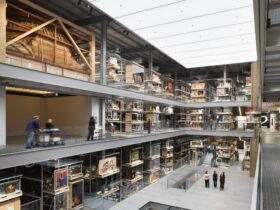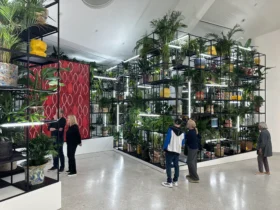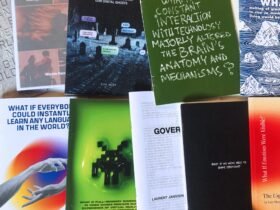
Raquel Rabinovich, who created subtle monochromatic paintings, works on paper and sculptures, died of cancer on January 5 at the age of 95 at her home in Rhinebeck, New York, the Raquel Rabinovich Art Trust confirmed. Hyperallergic.
Rabinovich’s palimpsestic abstract paintings, such as those from the Dimension Five (1969–74) series, appear as if illuminated from an impossible source, causing the disorienting effect of the eye adapting to a new environment. Although painstakingly layered with materials such as oil, pencil and wax, they have the effect of a worn memory that has been rubbed away.
The artist was born in 1929 to a Russian and Roman Jewish family in Buenos Aires, Argentina, and grew up in Córdoba. She studied with Italian painter Ernesto Farina at the University of Córdoba from 1950 to ’52, before returning to Buenos Aires to train with painter Héctor Basaldúa. In the mid-1950s she moved to Europe and lived in Edinburgh, Copenhagen and Paris, where she studied art history at the Sorbonne and art with the cubist painter André Lhote. In 1956 she married José Luis Reissig, with whom she had three children.

The couple returned to Buenos Aires in the early 1960s, marking the beginning of Rabinovich’s musings on what she called the “dark well,” or the hidden aspects of the world that point to a deeper realm of knowledge and wisdom. This idea would influence her work for the rest of her life.
“I have been repeatedly drawn to spaces of silence and darkness where my work can transcend its materiality, and where I have access to an original source of ideas and inspiration,” Rabinovich told the online magazine Frontera D in 2020.
Argentina’s increasingly unstable political climate, culminating in a military coup in 1966, forced Rabinovich to move to the United States with her husband and children the following year. They settled in Huntington, Long Island, where she joined the American Abstract Artists group. an organization founded by artists such as Josef Albers and Alice Trumbull Mason.

In the 1970s, she experienced a dream in which her paintings transformed into transparent and free-standing sculptures and began to create them. In ‘Tabletop Glass Sculpture (Untitled 1)’ (1974), for example, three adjacent dark gray panes of glass appear to deepen and lighten as planes overlap and break apart as the viewer moves around.
A 1970 group exhibition at the Caravan House Gallery titled 4 Argentinian artists living in New York marked a turning point in the artist’s career. Throughout the 1970s she exhibited at the Suffolk Museum Sculpture Garden, the City University of New York Graduate Center, and the Jewish Museum Sculpture Court.
After Rabinovich and Reissig divorced in 1979, she moved to a loft in Manhattan, where she regularly entertained fellow artists. (The couple would rekindle their relationship in 1987.) In the 1980s, she began practicing Vipassana, a Buddhist form of meditation that emphasizes insight, which in turn led to travels to South and Southeast Asia , including ancient ruins that inspired her to work in India. site-specific installations. These included “Point/Counterpoint” (1983), consisting of panes of bronze-tempered glass placed at odd angles, alternately reflecting and obscuring the buildings in the surrounding Lincoln Center for the Performing Arts in Manhattan.

After moving to Rhinebeck, New York, in the 1990s, Rabinovich became active in the arts and Buddhist communities and began to engage more deeply with the natural environment, particularly the Hudson River. Her series 2001–12 Turnouts takes the form of stone sculptures, some of which still exist, installed along the banks of the river that are hidden and revealed by the rise and fall of the tide. River Library (2002–25) consists of mud stuck to rolls of Essindia paper, often arranged in an organic grid, which Rabinovich described as a view of ancient clay tablets – a form of that ‘dark source’ coming to light.
Rabinovich received the 2011-2012 Lee Krasner Award for Lifetime Achievement, and her work is held in the collections of museums including the Metropolitan Museum of Art, the Museum of Modern Art, the Whitney Museum of American Art, and the Museo de Arte Moderno de Buenos. Aires. Her work was recently featured in exhibitions in the American society and the Frances Lehman Loeb Art Center Vassar College.
Rabinovich is survived by her children, Celia, Pedro and Nora; nine grandchildren; and six great-grandchildren. “She was the matriarch of our family and an important member of the Buddhist community in the Hudson Valley,” one of her granddaughters, Lucia Reissig, said. Hyperallergic in an email. “She had so many friends. She will be greatly missed.”














Leave a Reply